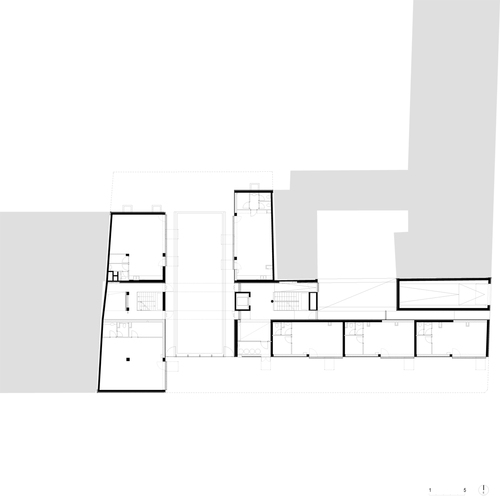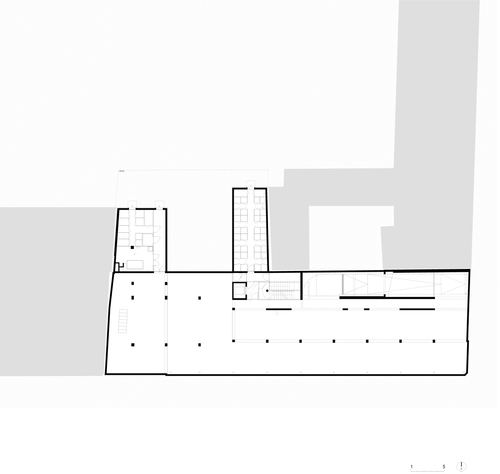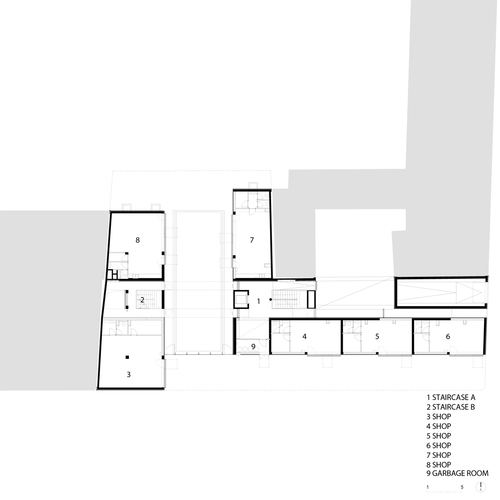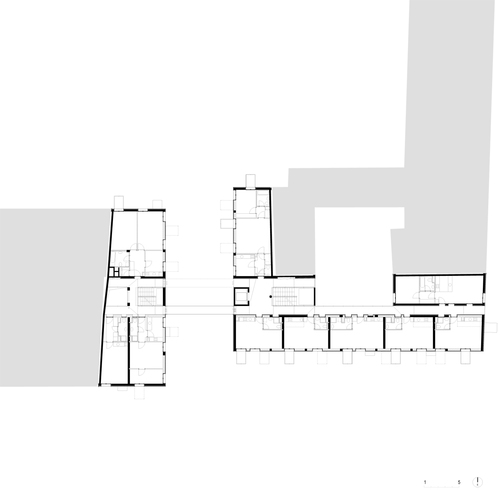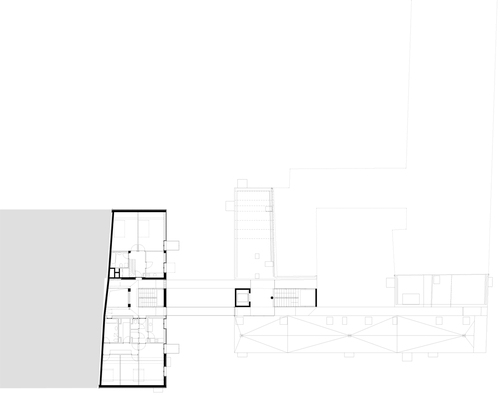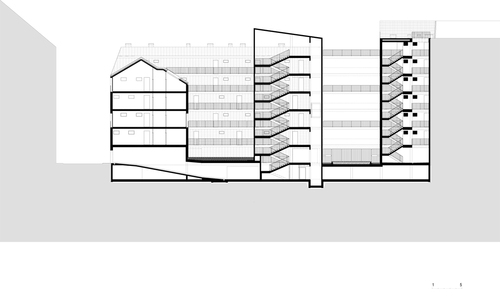Filmado inteiramente com um telemóvel, Splitscreen: A Love Story é um pequeno vídeo premiado na competição Nokia Shorts 2011.
sexta-feira, 1 de julho de 2011
quarta-feira, 29 de junho de 2011
Social housing, Mulhouse/ Habitação Social, Um verdadeiro laboratório experimental
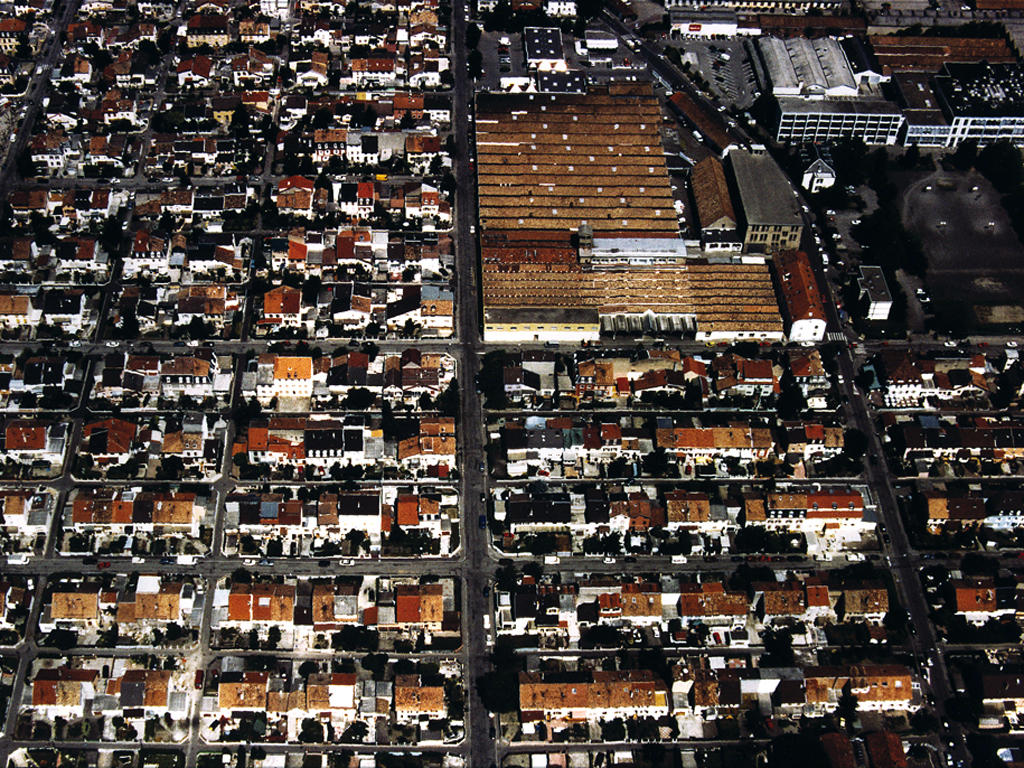
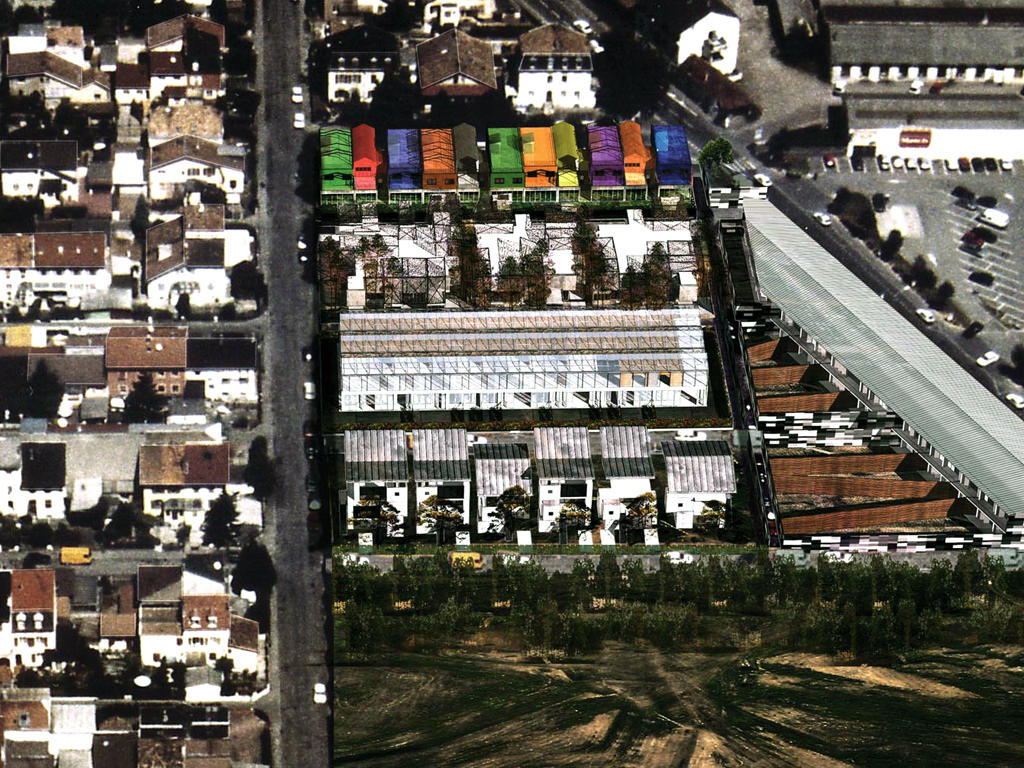
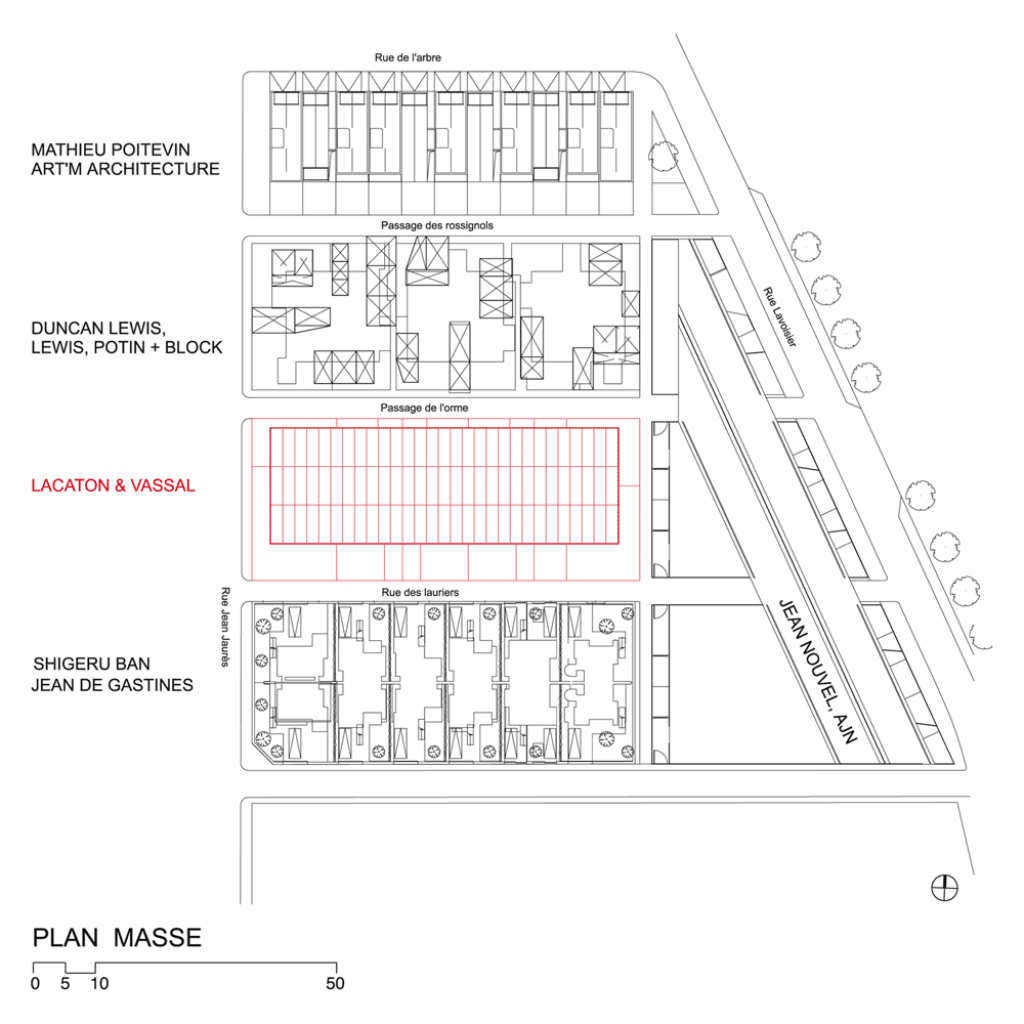
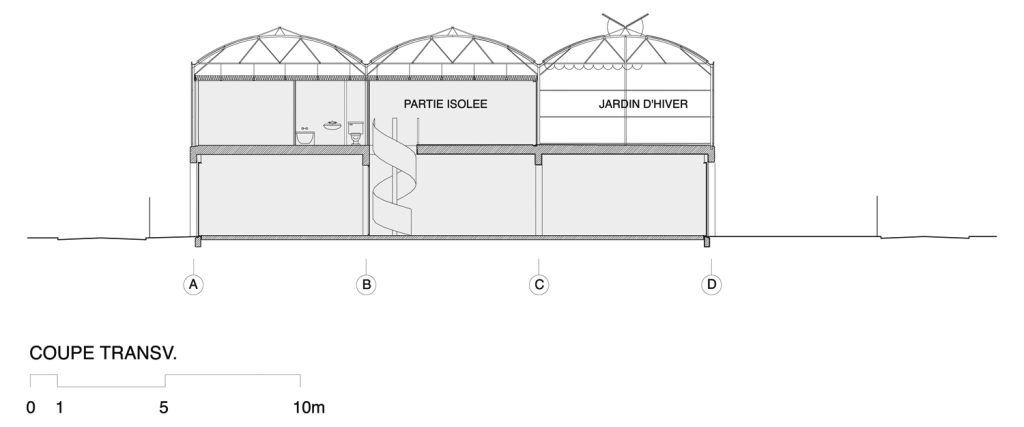
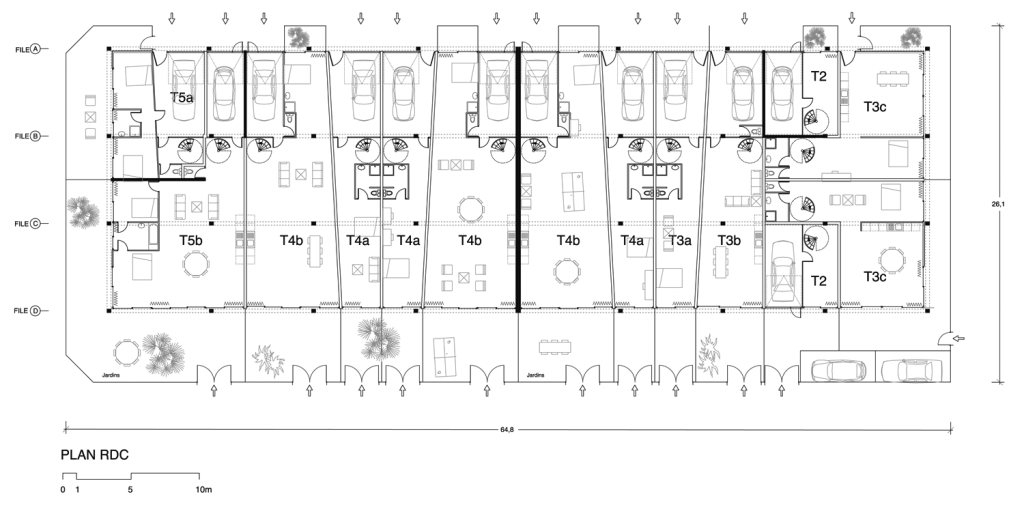
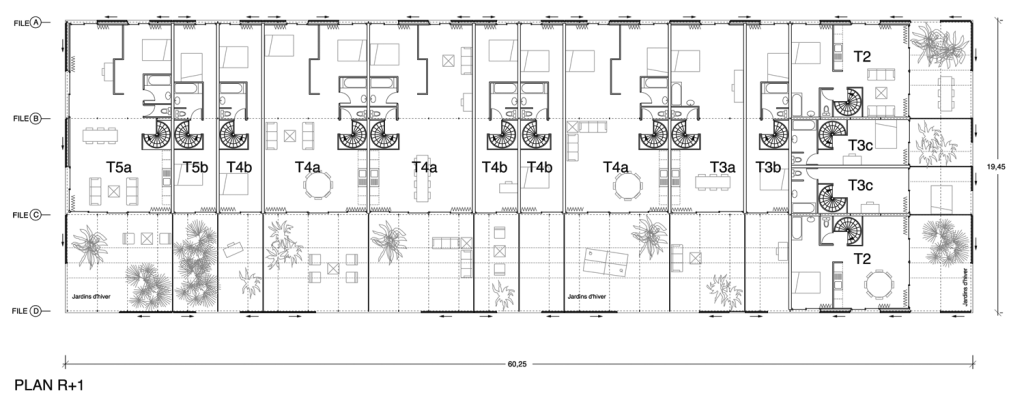
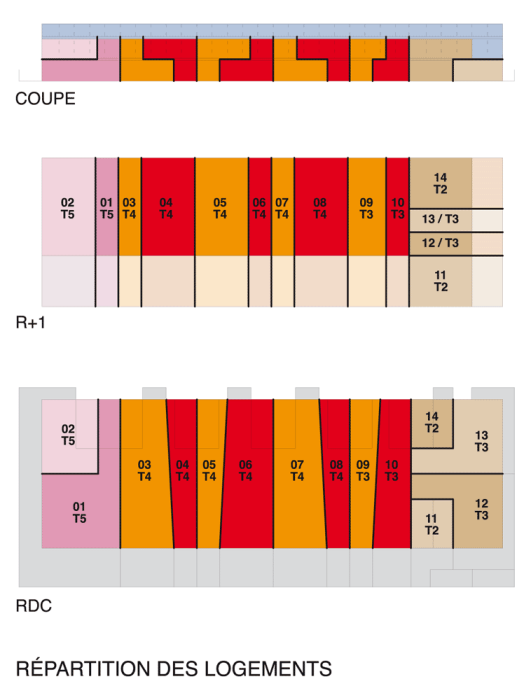
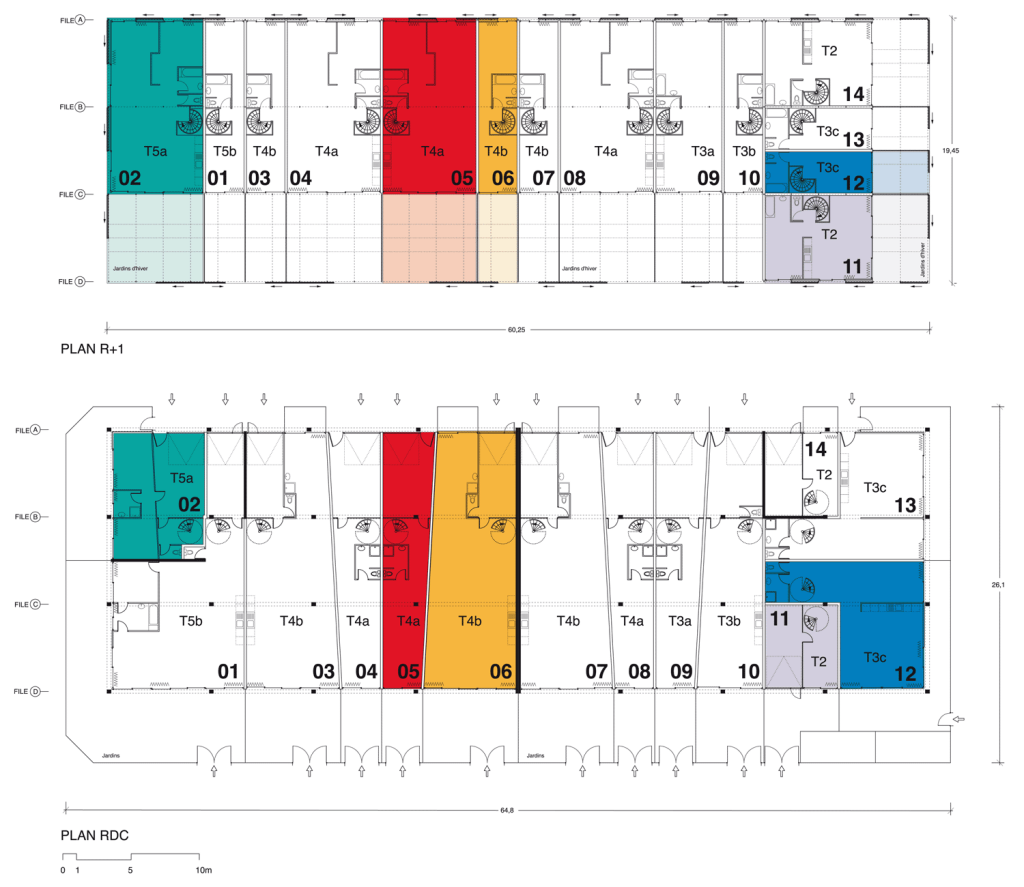
This project for 14 single-family houses is part of an operation for 61 dwellings created by five teams of architects* in the extended space of a housing estate in Mulhouse.
Our aim is to produce quality houses that are, for the same price, considerably larger than the standardized housing usually met with.
To begin with, the creating of a structure and a cheap and effective simple enveloppe enables us to define, on the loft principle, a maximum surface area and volume with contrasting, complementary and surprising spatial qualities.
On the ground floor a post/beam structure in concrete supports a platform at a height of 3 m, upon which horticultural greenhouses are fixed. The frame is in galvanized steel, the walls in transparent polycarbonate. Part of the greenhouse is isolated and heated. The other part constitutes a winter gardne, largely ventilated via the roof and facade. A horizontal sunshade unfurls inside the greenhouse.
The greenhouse principle, with its automated climate-control devices, has enabled solutions to the bioclimate to be developped.
Later on, we divide the volume into 14 dwellings**, set crosswise in duplex form, which profit from all the different qualities offered by the diversity of the spaces.
Anne Lacaton & Jean Philippe Vassal, architects
with David Duchein, David Pradel, architects collaborators
with Loeb Ingénierie SA, Cesma, Inotec, Cardonnel, E2I, engineers
* Jean Nouvel, Poitevin &Raynaud, Lewis+Block, Lacaton & Vassal, Shigeru Ban & De Gastines
** 14 council houses for rent / 2 T5, 6 T4, 4 T3, 2 T2
Area : 2 262 m2 (including garages and winter gardens) - average surface area by type : T5 (175 m2), T4 (175 m2), T3 (128 m2), T2 (102 m2)
Cost : 1,05 M€ net (75 000 € net per house)
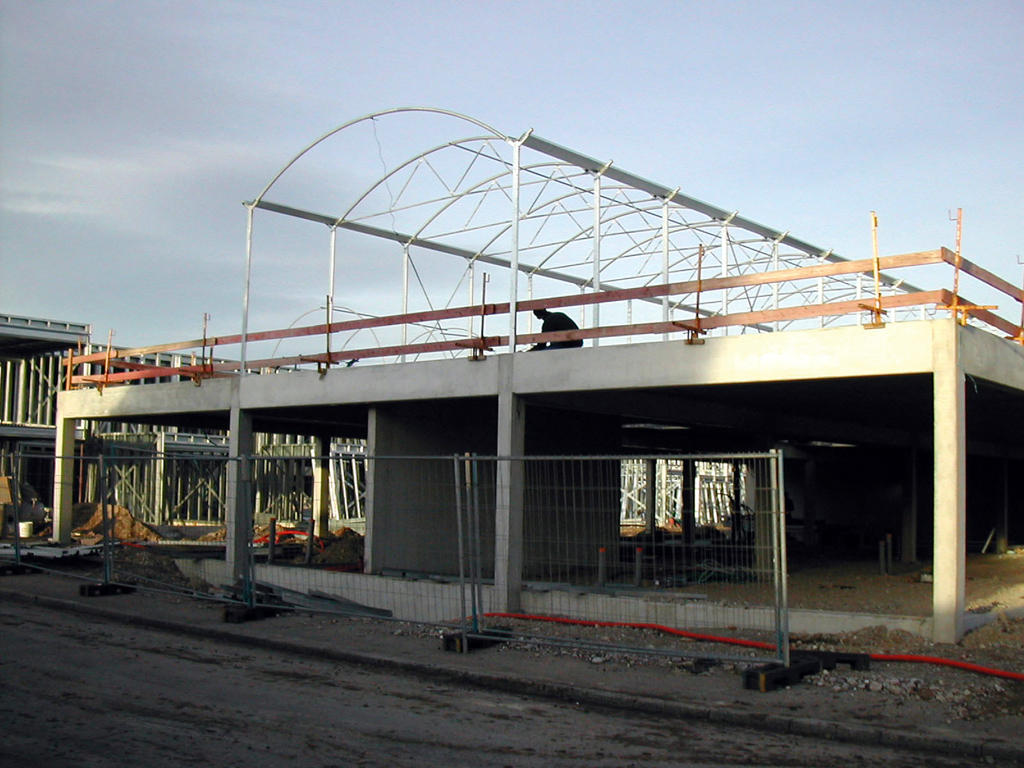
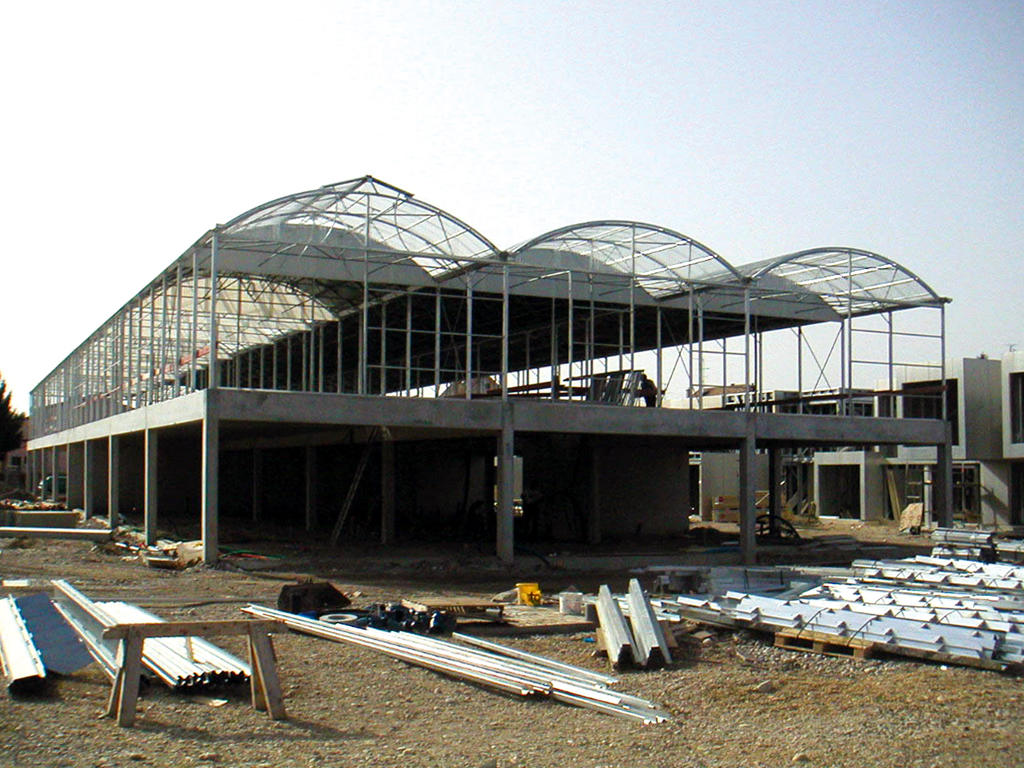
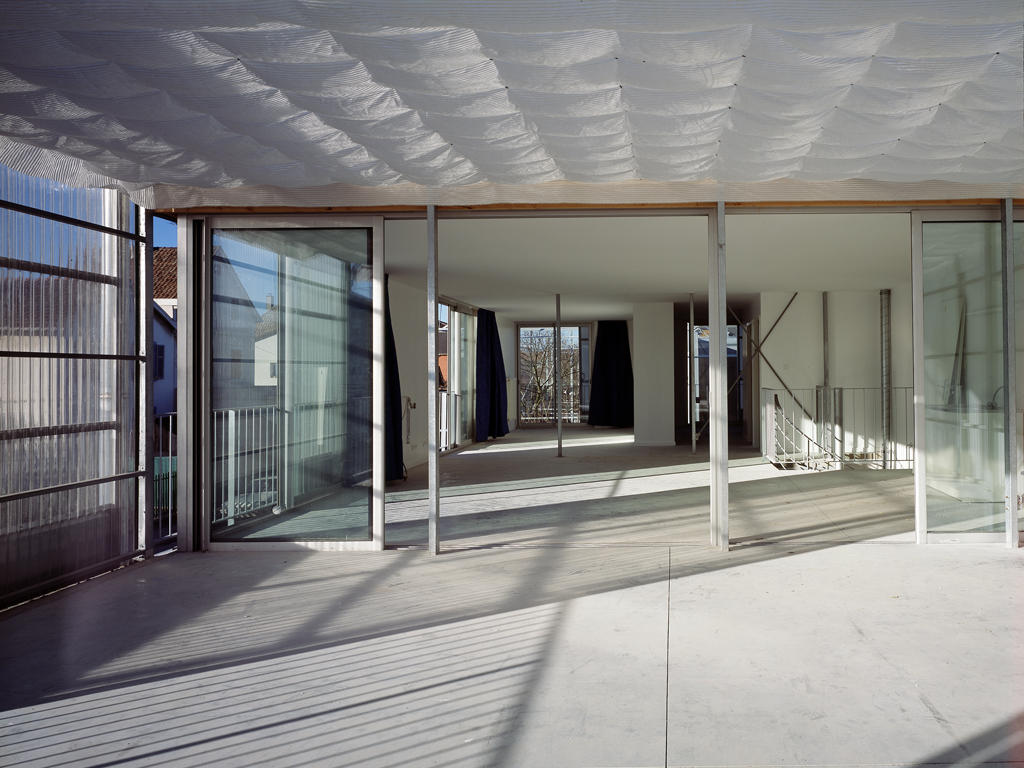
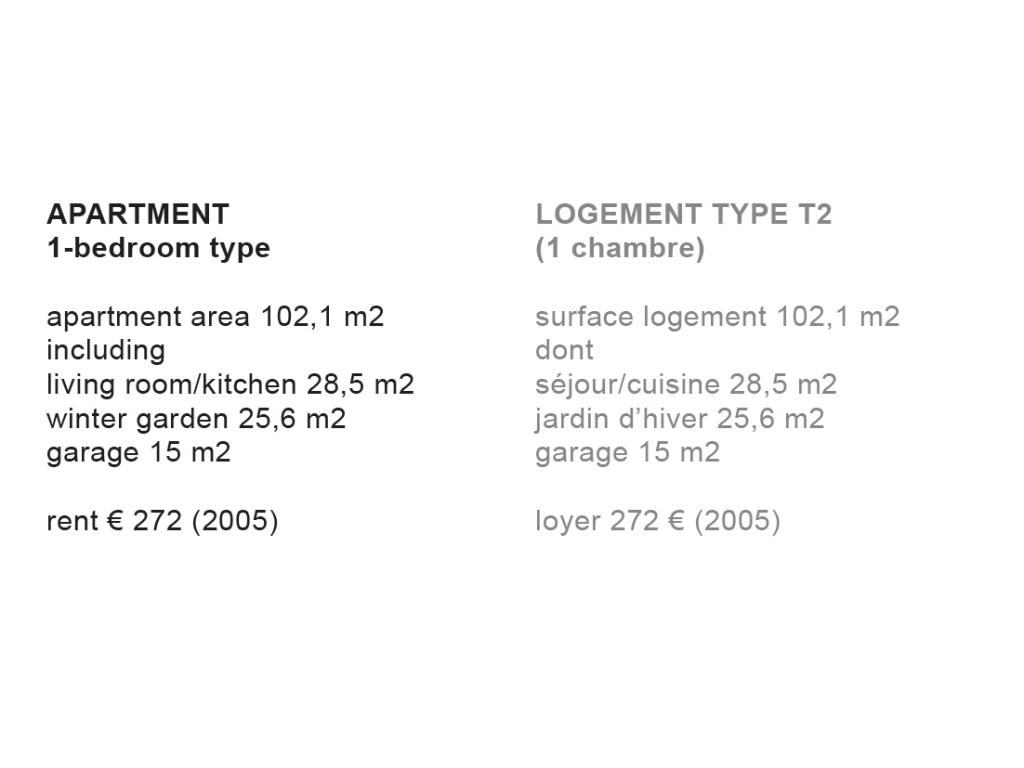
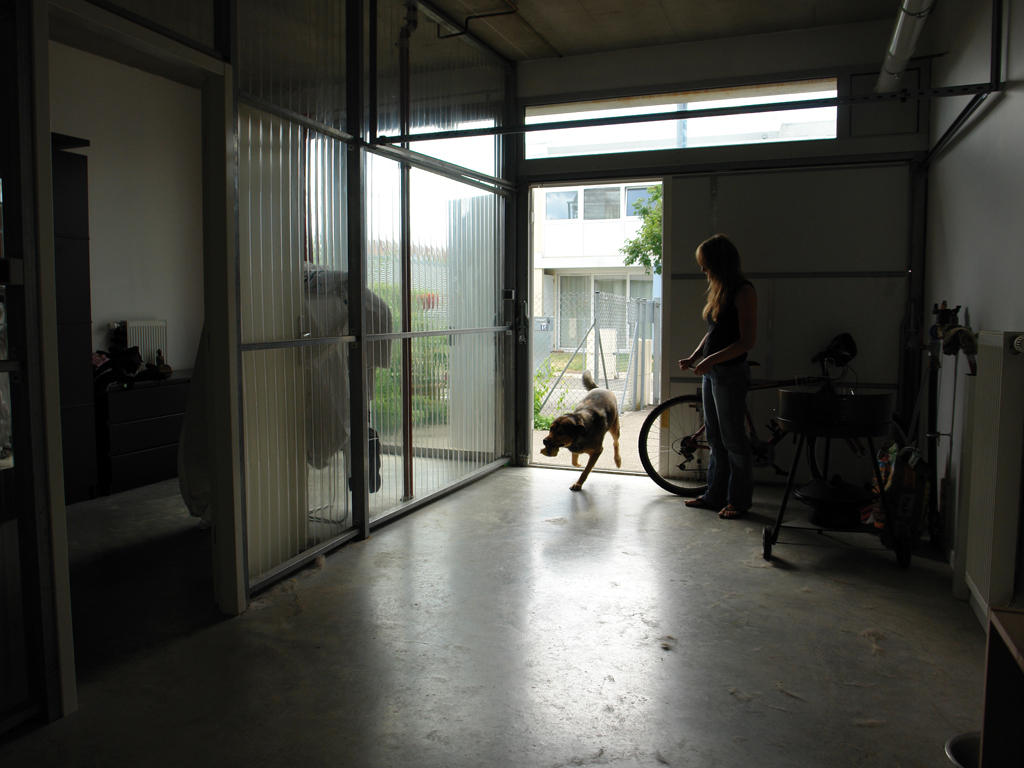
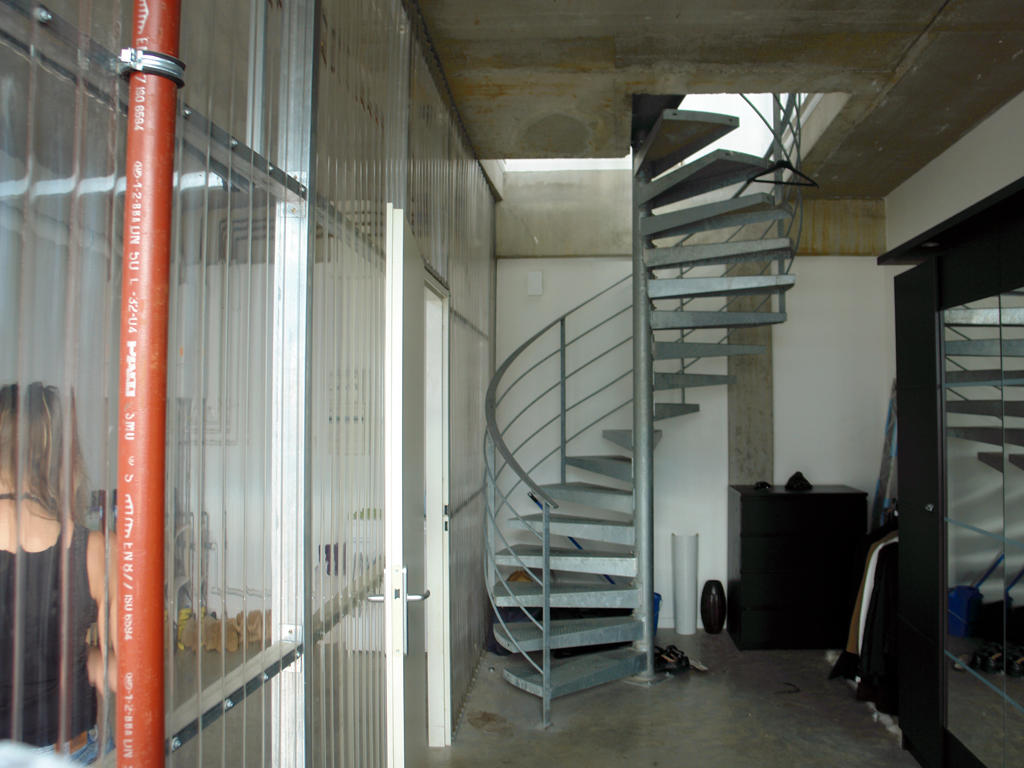
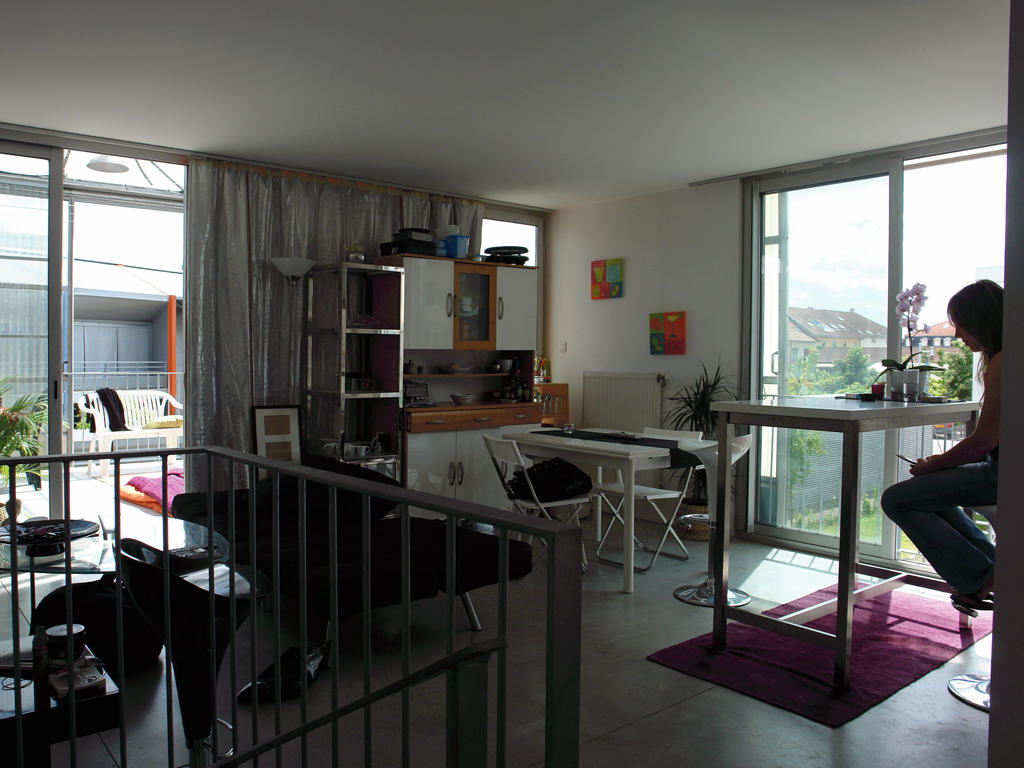
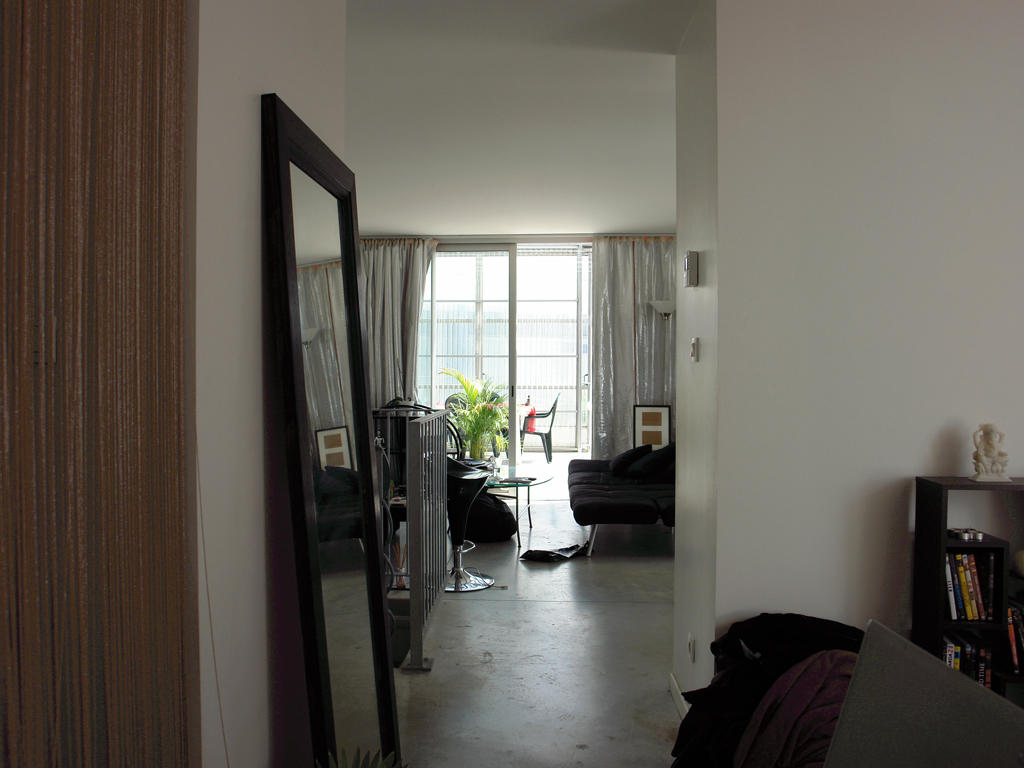
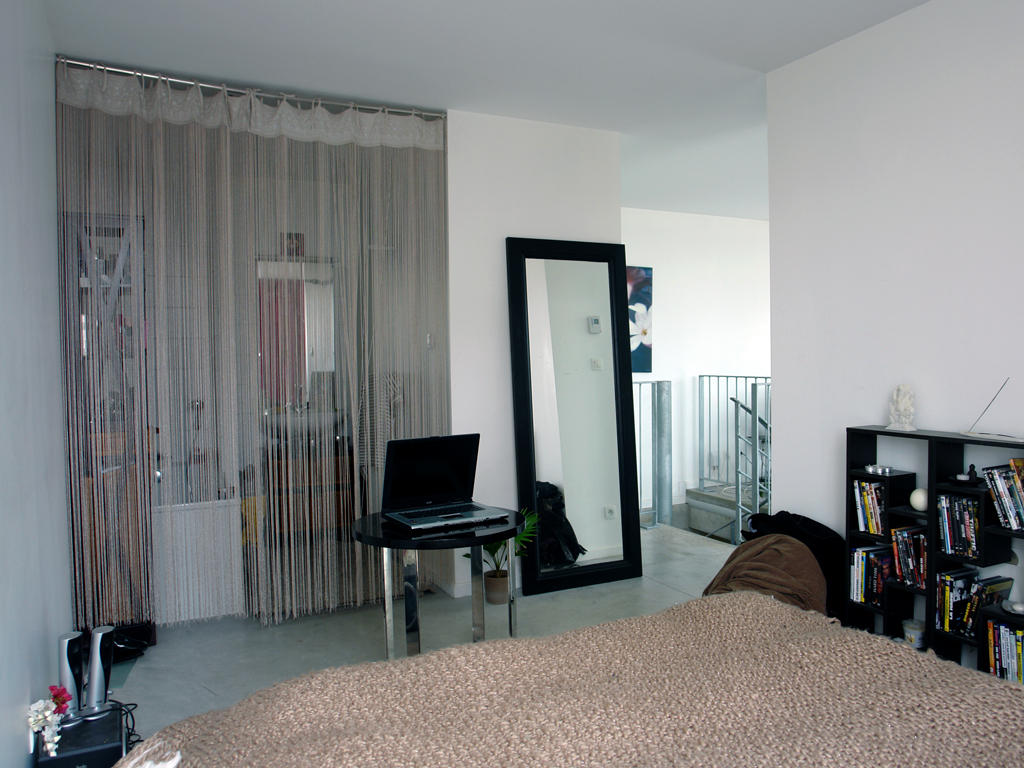
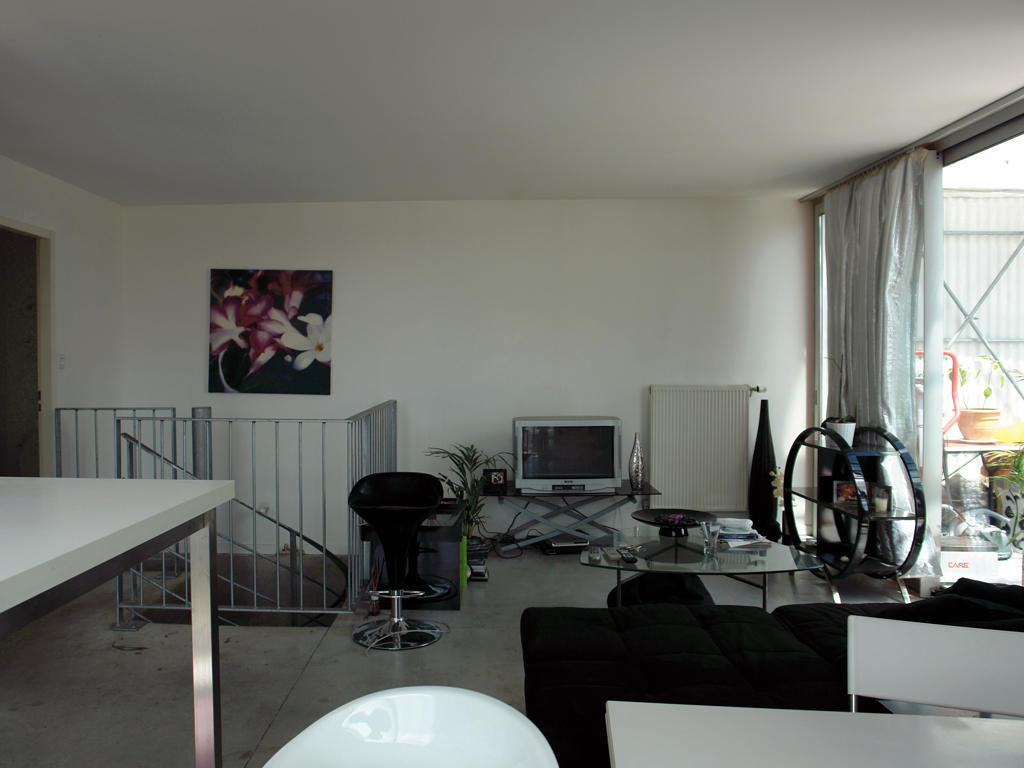
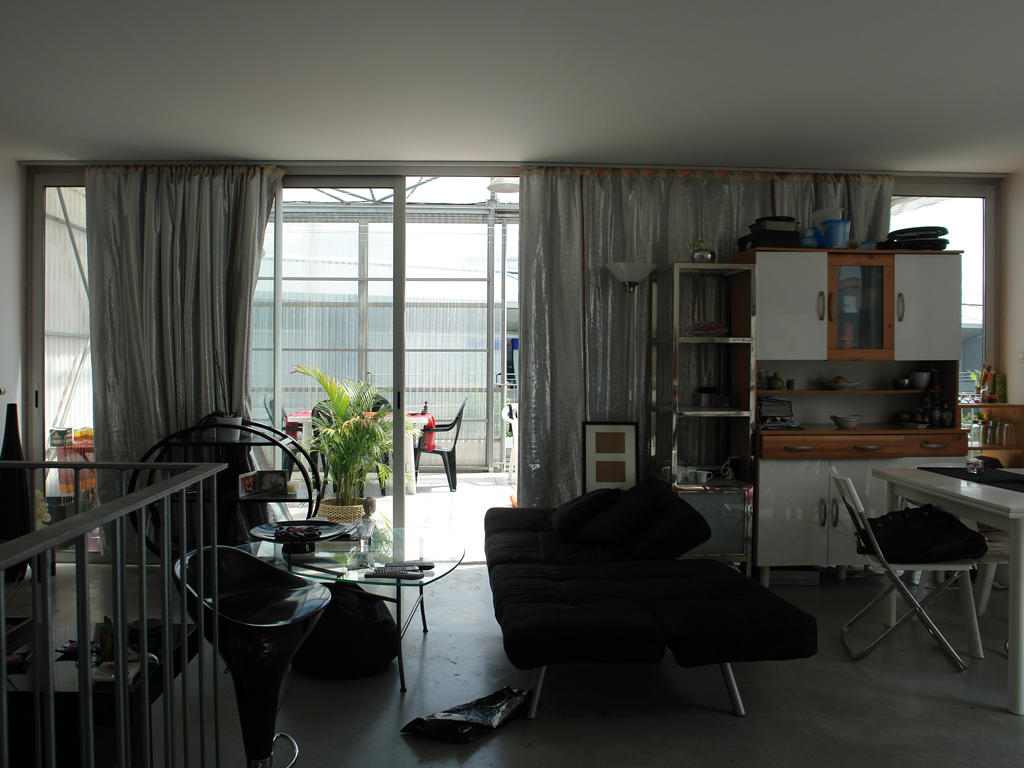
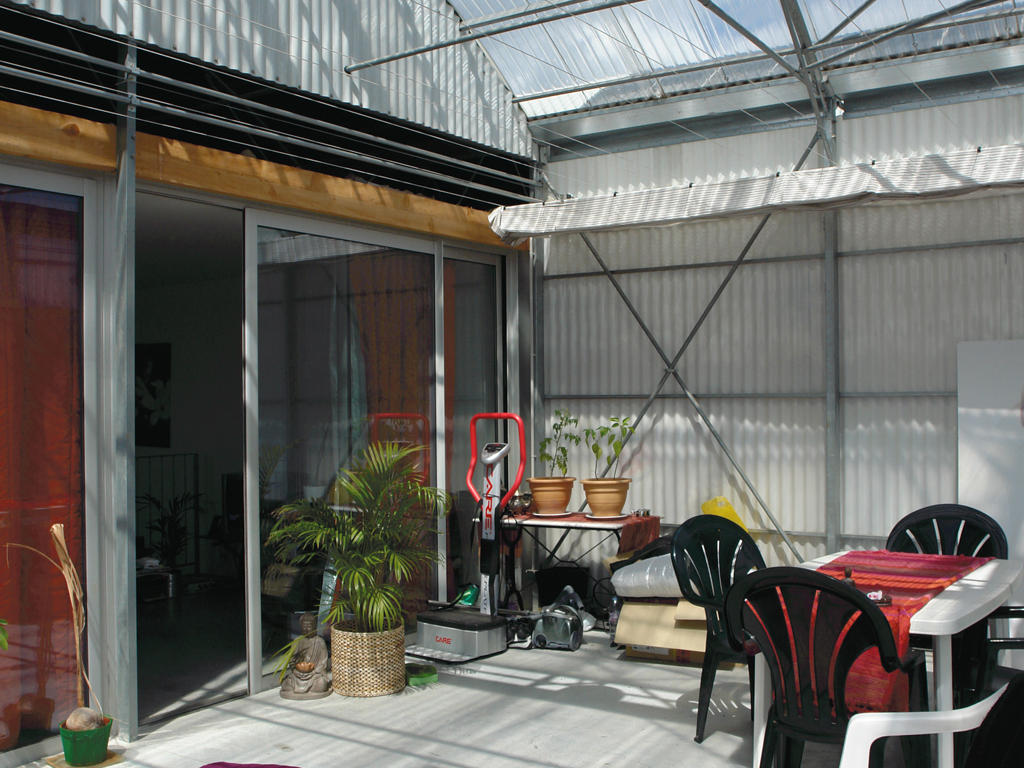
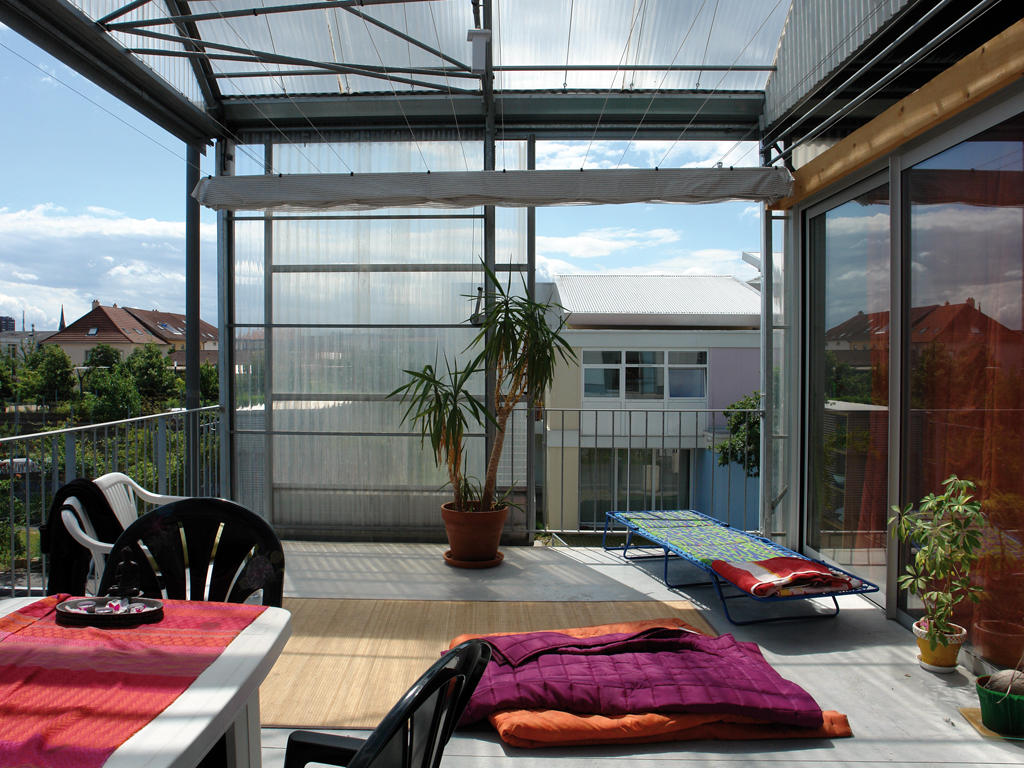
SUBurbios by James Howard Kunstler, 2007, Masterclass on TED
Segundo James Howard Kunstler os espaços públicos deveriam ser inspirados em centros de convivência e manifestação concreta do bem comum. Em vez disso, ele explica, os EUA são uma nação repleta de lugares que não valem a pena cuidar.
quinta-feira, 26 de maio de 2011
quarta-feira, 25 de maio de 2011
Bike Lane in New York City
Time for a Street Renaissance! (Video)
by Michael Graham Richard, Ottawa, Canada  on 05.24.11
on 05.24.11
Complete Streets Are About More Than Just Bike Lanes
This great video is a bit longer than what our friends at Streetfilms usually produce (it's about 11 minutes long), but it's worth watching. It shows how a "complete" street isn't just about adding a bike lane, but rather about making it function for the community - the people who live and work there and those who pass through - and keeping people safe. On one level it's about the transformation of New York City, but on another, it's about lessons that can be applied anywhere. Via Streetfilms. See also: The 'Sperm Bike' Carries Donor Samples to Fertility Clinics Around Copenhagen
sexta-feira, 20 de maio de 2011
MVRDV DESIGNS CREATIVE INDUSTRY HUB
ALPHABET BUILDING AMSTERDAM
MVRDV DESIGNS CREATIVE INDUSTRY HUB
Amsterdam based project development corporation NIC started sale of the MVRDV designed Alphabet building. In Amsterdam small and mid-size creative companies have trouble finding suitable office space. The Alphabet building communicates through a clear exterior design which reveals on the East façade the house number and at the main façade its extension for each company, a letter of the alphabet. The interior is highly flexible and completed with a rough and pure finishing. The 3200m2 creative industry building will be completed in 2012 according to high energy efficiency standards.
On the East facade the house number, on the front facade its extension.
The creative industry has seemingly unrealistic demands when it comes to office locations: a incubator of creative ideas which is spacious and inspiring with a differentiating design at a great location with car access. The Alphabet building in the Amsterdam port refurbishment Minervahaven unites all these qualities. The former port is currently refurbished to become a creative hub.
Behind each letter is a flexible office unit
The building is on a relatively small site of 30 x 30 meters and consists of a transparent plinth with a compact office block on top. Behind each letter of the façade the building offers a flexible unit of 128m2, the units can be sold independently or as a series of letters. Design studio Thonik will occupy the top floor or the letters A to F. As it was impossible to put the entire alphabet on the façade the letters I and Q are missing: the IQ is inside the building.
Interior finishings are concrete, aluminium and steel
The interior finishing follows the demand of creative companies, large loft like spaces with a rough finishing: no double ceilings, exposed materials such as concrete, aluminium and steel. A number of sustainable technologies give the building an excellent energy profile. Parking is located inside the plinth, circulation and spacious outside areas at the back of the building.
Alphabet Building is located at Minervahaven Amsterdam
UNSUBSCRIBE
MVRDV was set up in Rotterdam (the Netherlands) in 1993 by Winy Maas, Jacob van Rijs and Nathalie de Vries. MVRDV engages globally in providing solutions to contemporary architectural and urban issues. A research based and highly collaborative design method engages experts from all fields, clients and stakeholders in the creative process. The results are exemplary and outspoken buildings, urban plans, studies and objects, which enable our cities and landscapes to develop towards a better future.
Early projects such as the headquarters for the Dutch Public Broadcaster VPRO and housing for elderly WoZoCo in Amsterdam lead to international acclaim.
MVRDV develops its work in a conceptual way, the changing condition is visualised and discussed through designs, sometimes literally through the design and construction of a diagram. The office continues to pursue its fascination and methodical research on density using a method of shaping space through complex amounts of data that accompany contemporary building and design processes.
MVRDV first published a cross section of these study results in FARMAX (1998), followed by a.o. MetaCity/Datatown (1999), Costa Iberica (2000), Regionmaker (2002), 5 Minutes City (2003), KM3 (2005), and more recently Spacefighter (2007) and Skycar City (2007). MVRDV deals with global ecological issues in large scale studies such as Pig City as well as in small pragmatic solutions for devastated areas of New Orleans.
Current projects include various housing projects in the Netherlands, Spain, China, France, the United Kingdom, USA, India, Korea and other countries, a bank headquarter in Oslo, Norway, a public library for Spijkenisse , Netherlands, a central market hall for Rotterdam, a culture plaza in Nanjing, China, large scale urban plans include a plan for an eco-city in Logroño, Spain, an urban vision for the doubling in size of Almere, Netherlands and Grand Paris, the vision of a post-Kyoto Greater Paris region.
The work of MVRDV is exhibited and published world wide and receives international awards. The 60 architects, designers and staff members conceive projects in a multi-disciplinary collaborative design process and apply highest technological and sustainable standards.
Together with Delft University of Technology MVRDV runs The Why Factory, an independent think tank and research institute providing argument for architecture and urbanism by envisioning the city of the future.
For information please contact public relations at MVRDV, Jan Knikker / Isabel Pagel
+31 10 477 2860 or pr@mvrdv.nl – http://www.mvrdv.nl/
segunda-feira, 16 de maio de 2011
CVDB arquitectos, Vale do Coa, International Public Competition
The project celebrates the territory character through a strong relation between landscape and built elements. The building is sited near the slope highest point. The Museum is a large stone body that inhabits the site as it projects itself above the landscape. The patio is the core of the museum, the public space where everything is crossed as it opens itself towards the landscape. At night, the weightlessness of the raised massive body is suspended by the light that comes from within the building glazed façade.
Art Museum, Vale do Coa, International Public Competition -2nd Prize europa concorsi
© CVDB arquitectos .
sábado, 14 de maio de 2011
domingo, 8 de maio de 2011
HABITAÇÃO SOCIAL, PROJECTAR E CONSTRUIR COM QUALIDADE, PETER KIS
© PLANT – Atelier Peter Kis . Pubblicata il 20 Dicembre 2010.
Organization of inner spaces
© PLANT – Atelier Peter Kis . Pubblicata il 20 Dicembre 2010.
A clear and uncomplicated longitudinal zone connects all the functions (apartments, parking, public spaces). This zone and the developed structural system allows the fexibility that appears in the organization of the functions, particularly in the layout of the apartments.
© PLANT – Atelier Peter Kis . Pubblicata il 20 Dicembre 2010.
Sustainability and efficiency
© PLANT – Atelier Peter Kis . Pubblicata il 20 Dicembre 2010.
Besides using contemporary building methods, we focused on the sustainability of the building by using durable and persistent materials. The building suggests elegance and balance by it’s proportion, scale and inner spaces, while it is functionally organized, frugal. The cost estimation and the consturction plan was continuously controlled during the design procedure.
© PLANT – Atelier Peter Kis . Pubblicata il 20 Dicembre 2010.
Written by Péter Kis
© PLANT – Atelier Peter Kis . Pubblicata il 20 Dicembre 2010.
2 Projectos de "Jovem Arquitecto" Fernando Romero [Museo Soumaya] & [Terminal de cruzeiros de Lisboa]
Ver também http://www.soumaya.com.mx/
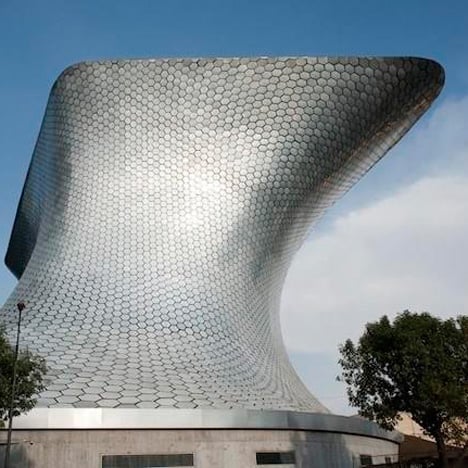
FREE Fernando Romero EnterprisE have completed this anvil-shaped museum in Mexico City, with a windowless facade composed of hexagonal aluminium tiles.
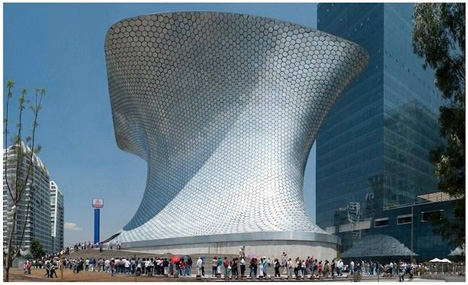
The Museo Soumaya is constructed of 28 steel curved columns with different diameters and geometries, which create its irregular form.
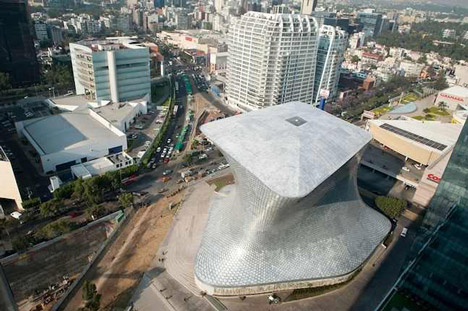
The building widens at the top, where a roof suspended from a cantilever allows natural daylight onto the top floor gallery.
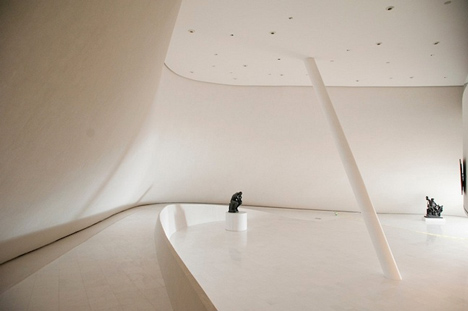
The museum will house over 6,200 Latin American artworks in a continuous exhibition space spread across six storeys, as well as an auditorium for 350 people, a library, offices, a restaurant, a gift shop and a lounge.
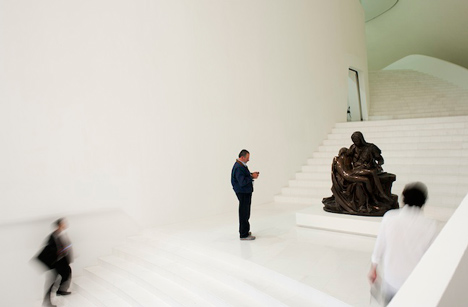
Completion of Museo Soumaya
FREE Fernando Romero EnterprisE
Mexico City–Designed by FREE Fernando Romero EnterprisE, Museo Soumaya opened to the public on March 29, 2011 after four years of development. The Museo Soumaya houses one of the most important art collections in Latin America with over 6,200 artworks and 60,000 square feet of exhibition space.
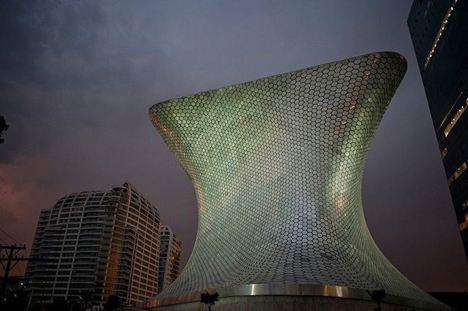
The Soumaya Museum is located in a former industrial zone dating from the 1940’s which today presents a very high commercial potential. The Soumaya Museum plays a key role in the reconversion of the area: as a preeminent cultural program, it acts as an initiator in the transformation of the urban perception. Its avant-garde morphology and typology define a new paradigm in the history of Mexican and international architecture.
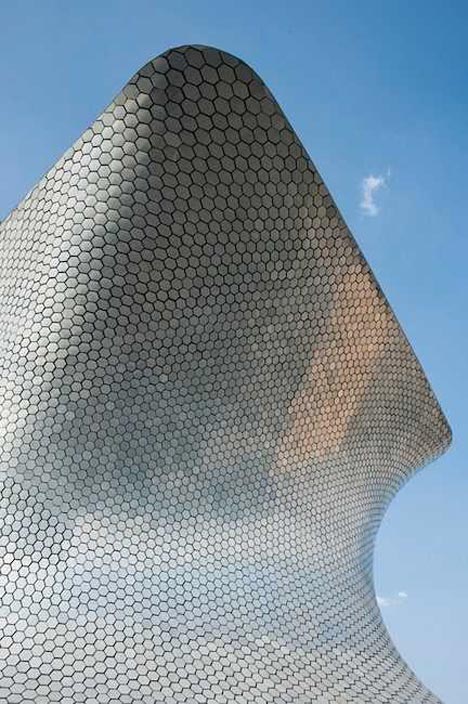
From the outside, the building is an organic and asymmetrical shape that is perceived differently by each visitor, while reflecting the diversity of the collection on the inside. Its heterogeneous collection is housed in a continuous exhibition space spread over six levels, representing approximately 60,000 ft². The building also includes an auditorium for 350 people, library, offices, a restaurant, a gift shop and a multi-purpose gathering lounge.
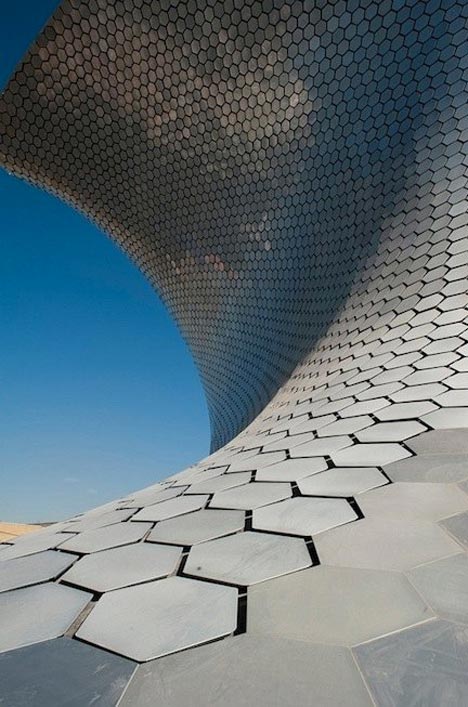
The shell of the building is constructed with 28 steel curved columns of different diameters, each with its own geometry and shape, offering the visitor a soft non-linear circulation all through the building. Located at each floor level, seven ring beams provide a system that braces the structure and guarantees its stability. The top floor is the most generous space of the museum; its roof is suspended from an impressive cantilever that allows natural daylight to flow in freely. In contrast, the building’s envelope is nearly opaque, offering little and scarce openings to the outside. This gesture can be interpreted as an intention to create a protected shelter for the art collection. The façade is made of hexagonal aluminum modules that optimize the preservation and durability of the entire building.
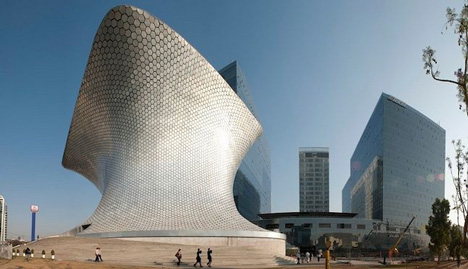
“The Museo Soumaya is an extraordinary structure rising up from the earth’s crust as a multi-dimensional icon,” Raymund Ryan, Curator, The Heinz Architectural Center.
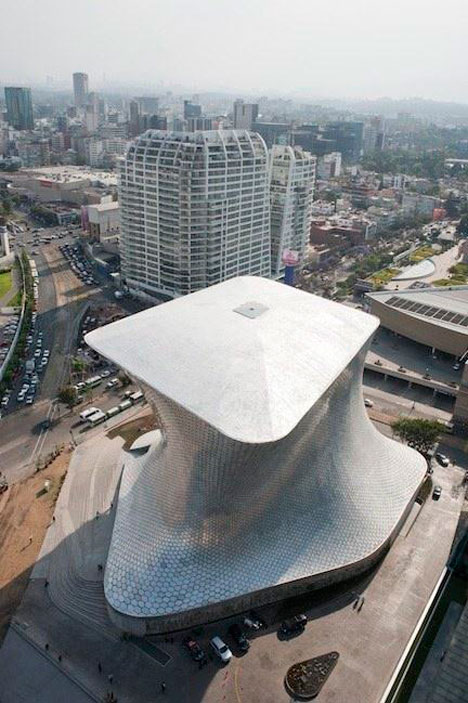
Location: Lago Zurich # 245, Col. Ampliación Granada, Del. Miguel Hidalgo. México DF. C.P. 11320
Completion: March 2011
Client/Owner: Fundación Carlos Slim
Architect Office: FREE Fernando Romero EnterprisE
General Contractor: CARSO Infraestructura y Contrucción
Interior Design: FREE + MYT/ CEO-Andrés Mier y Teran
********************************************************************
TERMINAL DE CRUZEIROS DE LISBOA, PORTUGAL

FREE Fernando Romero EnterprisE have completed this anvil-shaped museum in Mexico City, with a windowless facade composed of hexagonal aluminium tiles.

The Museo Soumaya is constructed of 28 steel curved columns with different diameters and geometries, which create its irregular form.

The building widens at the top, where a roof suspended from a cantilever allows natural daylight onto the top floor gallery.

The museum will house over 6,200 Latin American artworks in a continuous exhibition space spread across six storeys, as well as an auditorium for 350 people, a library, offices, a restaurant, a gift shop and a lounge.

Photography is by Adam Wiseman.
Here is some more information from the architects:Completion of Museo Soumaya
FREE Fernando Romero EnterprisE
Mexico City–Designed by FREE Fernando Romero EnterprisE, Museo Soumaya opened to the public on March 29, 2011 after four years of development. The Museo Soumaya houses one of the most important art collections in Latin America with over 6,200 artworks and 60,000 square feet of exhibition space.

The Soumaya Museum is located in a former industrial zone dating from the 1940’s which today presents a very high commercial potential. The Soumaya Museum plays a key role in the reconversion of the area: as a preeminent cultural program, it acts as an initiator in the transformation of the urban perception. Its avant-garde morphology and typology define a new paradigm in the history of Mexican and international architecture.

From the outside, the building is an organic and asymmetrical shape that is perceived differently by each visitor, while reflecting the diversity of the collection on the inside. Its heterogeneous collection is housed in a continuous exhibition space spread over six levels, representing approximately 60,000 ft². The building also includes an auditorium for 350 people, library, offices, a restaurant, a gift shop and a multi-purpose gathering lounge.

The shell of the building is constructed with 28 steel curved columns of different diameters, each with its own geometry and shape, offering the visitor a soft non-linear circulation all through the building. Located at each floor level, seven ring beams provide a system that braces the structure and guarantees its stability. The top floor is the most generous space of the museum; its roof is suspended from an impressive cantilever that allows natural daylight to flow in freely. In contrast, the building’s envelope is nearly opaque, offering little and scarce openings to the outside. This gesture can be interpreted as an intention to create a protected shelter for the art collection. The façade is made of hexagonal aluminum modules that optimize the preservation and durability of the entire building.

“The Museo Soumaya is an extraordinary structure rising up from the earth’s crust as a multi-dimensional icon,” Raymund Ryan, Curator, The Heinz Architectural Center.

Location: Lago Zurich # 245, Col. Ampliación Granada, Del. Miguel Hidalgo. México DF. C.P. 11320
Completion: March 2011
Client/Owner: Fundación Carlos Slim
Architect Office: FREE Fernando Romero EnterprisE
General Contractor: CARSO Infraestructura y Contrucción
Interior Design: FREE + MYT/ CEO-Andrés Mier y Teran
********************************************************************
TERMINAL DE CRUZEIROS DE LISBOA, PORTUGAL
Lisboa é das cidades mais visitadas de todo o mundo.
Uma das vias face ao combate da crise económica é o investimento no Turismo, para tal a construção de um terminal de cruzeiros, é uma mais valia não só para a capital Lisboa como também para todo o País. O local de contrução previligiado, junto ao centro histórico de Alfama. É proposto uma forma orgânica que faz a transição entre a cidade e o rio Tejo. Uma plataforma de betão que permite manipular os diversos espaços debaixo da mesma e sendo possivel ter diversos usos publicos, de zonas de restauração, cafés, lojas. A variação do pé direito ao longo da plataforma, qualifica cada espaço de acordo com o programa pré estabelecido. As zonas mais importantes são o Átrio principal, Check-in, zonas de espera e zonas de partidas e chegadas, sendo estas as zonas com pé direito superior ás restantes. No primeiro andar, a plataforma criar um terraço, permitindo aos visitantes de desfrutar da vista do Rio Tejo.
Equipa de Projecto: Fernando Romero, Sergio Rebelo, Astrid Rovisco, Pedro Lechuga, Itzia Guzman, Sophie Lufkin, João Rainha Castro, Nuno Costa, Joaquim Viseu, Sofia Carmine, Pedro Albuquerque, João Sousa, Fernando Palma Ruivo, Carlos Marinez Bustelo, and Antonio Ferreira
Subscrever:
Mensagens (Atom)

















